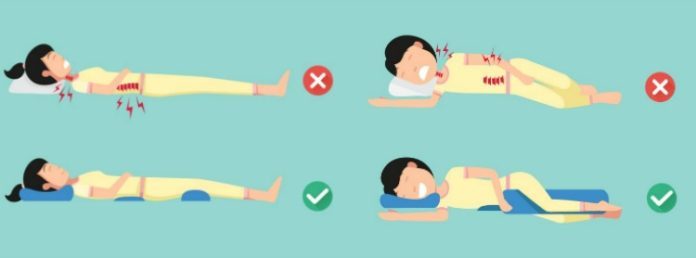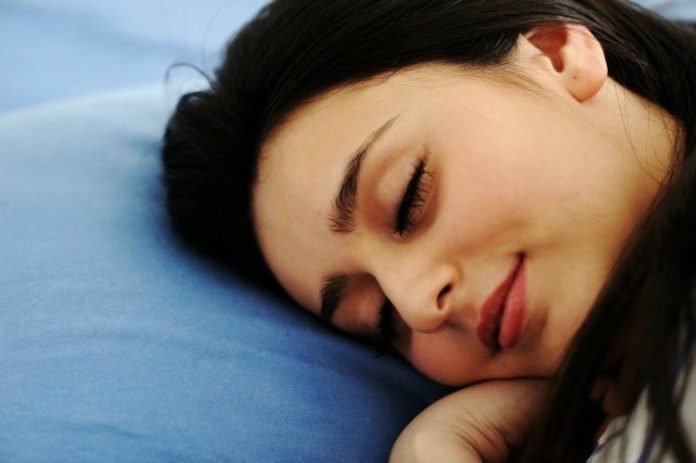Chronic illness and poor sleep go hand in hand. Many people with chronic illness suffer from debilitating fatigue. To make matters worse, they often sleep poorly and do not get the restorative sleep their bodies require.
Also, poor sleep has been linked to the development of a number of chronic diseases and conditions (including diabetes, cardiovascular disease, obesity, and depression) and should be addressed no matter your health status. 1 2 3 4 5 6 7
Common Causes of Poor Sleep
1A Disruptive Sleep Environment
A deep, restorative sleep is best achieved in a cool, dark, and quiet environment. You can create this setting by doing the following:
- Most people sleep best in a cool room with temperatures set between 60 and 72 degrees Fahrenheit. (According to the National Sleep Foundation, the ideal bedroom temperature is around 65 degrees.) If your significant other prefers a warmer sleep environment, there are specialized pillow cases, bedding, and fans that can keep you cool while not disrupting his/her sleep.
- Some people experience extreme swings in body temperature at night and do best if they have multiple blankets nearby which can be easily added or removed throughout the night.
- If you experience night sweats, consider using bedding and clothing that wick away moisture from your skin.
- It is best to sleep in a dark room. This is particularly important for those with chronic illness who require naps during the day. A dark room can be achieved with block-out shades and/or curtains. If these are not available, an eye mask can be helpful.
- It is important your sleep environment is free from disruptive sounds. A white noise sound machine or a fan can help reduce disruptive sounds. I use a Marpac Dohm DS Sound Machine which is the Official Sound Conditioner of the National Sleep Foundation. It is customizable and allows you to change the intensity and tone of the sound.
2Poor Bedroom Ventilation
Fresh air with adequate oxygen is needed for restorative sleep. You can improve the quality of the air you breathe while sleeping by doing the following:
- Try every day to open a bedroom window for a few minutes and/or use a fan to circulate fresh air.
- Don’t sleep with bedding covering your mouth/nose which can create a collection of exhaled air which is not healthy to rebreathe.
3An Overstimulated Brain
Your brain produces hormones to help regulate your sleep-wake cycle (circadian rhythm). These hormones tell your brain to stay awake and are triggered by anxiety, stimulants, physical and emotional stress, and exposure to sunlight and artificial light.
Artificial blue light emitted from laptops, tablets, and cell phones simulates sunlight and can confuse your brain into thinking nighttime is daytime. 8 9 10 11
You can prepare your brain for sleep by:
- Creating a relaxing bedtime ritual
- Read inspirational stories
- Listen to calming music
- Pray
- Meditate
- Do breathing exercises 12
- Try this restorative body scan technique
- Consider running a diffuser with calming essential oils (e.g. lavender) 30-60 minutes before going to bed. 13 14
- Drink warm milk or herbal tea about an hour before going to bed
- Take a warm bath before going to bed
- Retraining your sleep-wake cycle
- Use blue light reducing software on your electronics. Or better yet, turn off your electronics at least an hour before going to bed. (Install f.lux on computers and Windows/Android devices. Use Night Shift on Apple devices.)
- Use low-watt light bulbs in your bedroom.
- Stick to a regular sleep schedule as much as possible. This can train your brain into a regular sleep rhythm.
- Most of us with chronic illness get very little sunlight. Try to expose yourself to sunlight 15-20 minutes every day. This is most helpful if done in the morning because it tells your brain it is daytime and time to wake up.
- If you have difficulty waking up in the morning, consider trying a sunrise alarm clock. 15
- Avoiding foods, drinks, and chemicals that stimulate the brain
- Avoid caffeine, alcohol, nicotine, and other chemicals that interfere with sleep. Many people with chronic illness are ultrasensitive to caffeine and even drinking a small amount in the morning can affect sleep at night.
- Limit sugar intake, especially in the few hours before bedtime.
- Avoid eating large meals before going to bed. However, a small bedtime snack consisting of a healthy fat and a carbohydrate can help prevent a blood sugar drop and early morning awakening. (Tip from my favorite nutritionists at Nutritional Weight and Wellness.)
- Talking it out
- Chronic illness is stressful. If anxiety is causing poor sleep, consider working with a therapist who specializes in insomnia and has training in cognitive behavioral therapy.
4Pain

Pain can make it difficult to fall asleep and stay asleep. Also, poor sleep can make the body more sensitive to pain, creating a vicious cycle. One of the best ways to reduce pain at night is to make sure your body is properly supported by your mattress and pillow(s). You can properly support your spine and joints by doing the following:
- Using a supportive mattress
- Mattresses with obvious dips and defects are usually not supportive enough for your body and likely indicate it’s time for a new mattress. Most experts say a mattress’s lifespan is 7-10 years.
- In general, most people prefer a medium-firm mattress. Lying on your back with a pillow under the knees is usually the most comfortable position. If you have severe low back pain, consider placing another small pillow under your low back.
- If you do a lot of side-lying and have hip, knee, shoulder, or elbow pain, consider adding padding on top of your mattress and use a body pillow between your legs and arms to keep your spine from rotating. You may also benefit from a small pillow under your waist.
- Some people, especially those with disc-related low back pain, feel most comfortable sleeping on the stomach, on a firmer mattress with a low-profile pillow under the abdomen. (Otherwise, I don’t recommend sleeping on your stomach because it flattens the natural curve of the spine and puts additional strain on your back and neck muscles.)
- When purchasing a new mattress, make sure you try out various mattresses at the store, and confirm the return policy allows for at least a 30-day trial period.
- Making sure your pillow supports your neck
- Even if you don’t have neck pain, a supportive pillow is a must. The pillow should keep your head in alignment with your spine (see illustration). You don’t want a pillow that is too big or too flat.
- If you sleep on your side, your pillow should fill the gap between your mattress, head, neck, and shoulders. Check out this helpful guide: pillows for side-sleepers.
- If you sleep on your back, you should sleep on a thinner pillow with extra padding on the lower third of the pillow to fill the gap between your neck and the mattress.
- If you have neck pain, check out this helpful article: pillows for those with neck pain.
- Those with neck pain should avoid stomach sleeping.
- When purchasing a new pillow, make sure you are able to return it if it does not work for you.
Important Note: Some people with chronic illness are sensitive to the chemicals released by new products (off-gassing). If this is a concern for you, make sure to ask about this issue before purchasing a new mattress or pillow.
5An Undiagnosed Medical Issue Causing Poor Sleep
If the above tips aren’t helpful, you should schedule an appointment with your doctor to discuss your sleep. Some medications can disrupt your sleep and the dosing schedule may need to be modified by your doctor. Also, there are medical conditions (i.g. Obstructive Sleep Apnea, Restless Legs Syndrome, REM sleep disorder, thyroid disease, allergies with post-nasal drip, lung disease, heartburn, indigestion, hormonal changes) that can interfere with sleep. Your doctor may refer you to a sleep specialist who can perform a sleep study to identify the cause of your poor sleep.
Summary:
These practical tips can help improve the quality of your sleep so your body has more time to repair itself and restore depleted energy levels.
Interested in consulting Dr. Stenehjem? CLICK HERE to learn more.
© Copyright 2017 Mastering Health and Happiness, PLLC. All Rights Reserved.
References
- McCracken LM, Iverson GL. Disrupted sleep patterns and daily functioning in patients with chronic pain. Pain Res Manag. 2002 Summer;7(2):75-9.
- Sandusky SB, McGuire L, Smith MT, Wigley FM, et al. Fatigue: an overlooked determinant of physical function in scleroderma. Rheumatology (Oxford). 2009 Feb;48(2):165-9. doi: 10.1093/rheumatology/ken455. Epub 2008 Dec 23.
- Matsumoto T, Tabara Y, Murase K, et al. Combined association of clinical and lifestyle factors with non-restorative sleep: The Nagahama Study. PLoS One. 2017 Mar 9;12(3):e0171849. doi: 10.1371/journal.pone.0171849. eCollection 2017.
- Knutson KL, Ryden AM, Mander VA, Van Cauter E. Role of sleep duration and quality in the risk and severity of type 2 diabetes mellitus. Arch Intern Med 2006;166:1768–1764.
- Kasasbeh E, Chi DS, Krishnaswamy G. Inflammatory aspects of sleep apnea and their cardiovascular consequences. South Med J 2006;99:58–67.
- Taheri S. The link between short sleep duration and obesity: We should recommend more sleep to prevent obesity. Arch Dis Child 2006;91:881–884.
- Schwartz DJ, Kohler WC, Karatinos G. Symptoms of depression in individuals with obstructive sleep apnea may be amenable to treatment with continuous positive airway pressure. Chest 2005;128:1304–1306.
- Chang A, Aeschbach D, Duffy J, et al. Evening use of light-emitting eReaders negatively affects sleep, circadian timing, and next-morning alertness. Proc Natl Acad Sci U S A. 2015 Jan 27;112(4):1232-7. doi: 10.1073/pnas.1418490112. Epub 2014 Dec 22.
- Stothard ER, McHill AW, Depner CM, et al. Circadian Entrainment to the Natural Light-Dark Cycle across Seasons and the Weekend. Curr Biol. 2017 Feb 20;27(4):508-513. doi: 10.1016/j.cub.2016.12.041. Epub 2017 Feb 2.
- Cho Y, Ryu SH, Lee BR, et al. Effects of artificial light at night on human health: A literature review of observational and experimental studies applied to exposure assessment. Chronobiol Int. 2015;32(9):1294-310. doi: 10.3109/07420528.2015.1073158. Epub 2015 Sep 16.
- Holzman D. What’s in a Color? The Unique Human Health Effects of Blue Light. Environ Health Perspect. 2010 Jan; 118(1): A22–A27. doi: 10.1289/ehp.118-a22.
- Diezemann A. Relaxation techniques for chronic pain. Schmerz. 2011 Aug;25(4):445-53. doi: 10.1007/s00482-011-1019-2.
- Lewith G, Godfrey A, Prescott P. A Single-Blinded, Randomized Pilot Study Evaluating the Aroma of Lavandula augustifolia as a Treatment for Mild Insomnia. The Journal of Alternative and Complementary Medicine. August 2005, 11(4): 631-637. doi:10.1089/acm.2005.11.631.
- Mi-Yeon Cho, Eun Sil Min, Myung-Haeng Hur, et al. Effects of Aromatherapy on the Anxiety, Vital Signs, and Sleep Quality of Percutaneous Coronary Intervention Patients in Intensive Care Units. Evid Based Complement Alternat Med. 2013; 2013: 381381. Published online 2013 Feb 17. doi: 10.1155/2013/381381
- Leproult R, Colecchia E, L’Hermite-Balériaux M, et al. Transition from Dim to Bright Light in the Morning Induces an Immediate Elevation of Cortisol Levels. 2001; 86 (1): 151-157. doi: 10.1210/jcem.86.1.7102.
